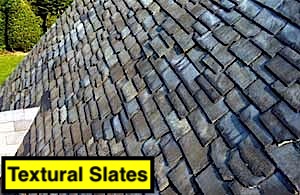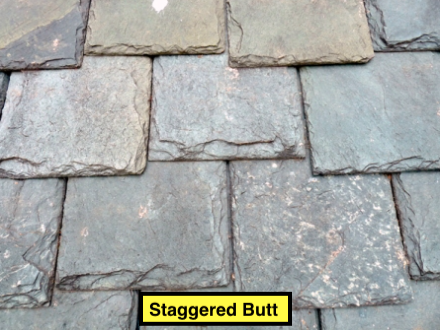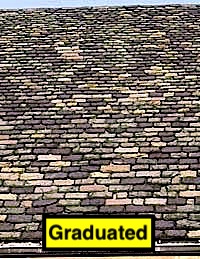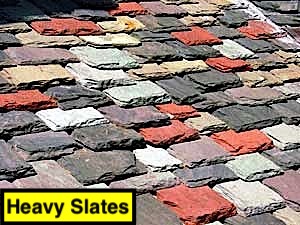
DON’T WALK SLATE ROOFS!
- First course must be doubled or tripled;
- Look for cracked or broken slates;
- Look for loose or slipped slates;
- Look for inadequate headlap. Minimum headlap: 3 inches. Headlap with slate is the amount by how much slates in alternate (not adjacent) courses overlap.
- Look for slates at valleys or rakes that have had one hole cut away and so are fastened with one nail only;
- Look for flashing with nails of a different metal;
- Look for poorly installed hip and ridge cap slates;
- Look for poor repairs
- In cold climates, look for over-spaced or missing snowguards;
- Look for efflorescence: a sign of increased absorption and aging;
- Minimum Sidelap: 3”;
- Minimum slope: 4&12 (IRC)
ABOUT SLATE ROOFS
Slate is a natural stone formed 450 to 650 million years ago by the accumulation of marine sediments. The differences in color, density and durability are the result of the differences in its chemical and physical makeup, and the different types and magnitudes of forces that acted upon the slate as it was being formed.
Color
One concern with slate is its color-fastness, which refers to the long-term stability of the slate's natural color. Slate is classified as fading or unfading, according to its color stability. Fading slates may change to a different color over time. They may fade to a new shade of the same color, they may develop a streaked appearance, or they may slowly change to a different color. Color differences can be subtle, and similar-looking slates can have very different lifespans. Fading slates may change color at any time after installation. For this reason, accurate, long-term matching of existing slates can be difficult.
Density
The density of slate has a strong effect on its durability. Slate that was exposed to high pressure and temperatures during formation tends to be denser. Higher density makes slate less porous and less likely to absorb moisture. Moisture absorption is a major contributor to slate weathering and deterioration.
Inspecting Slate
Proper installation is key when you inspect a roof made from tiles that may last over 150 years. Underlayment, fasteners and flashing will almost always have shorter lifespans than slate.
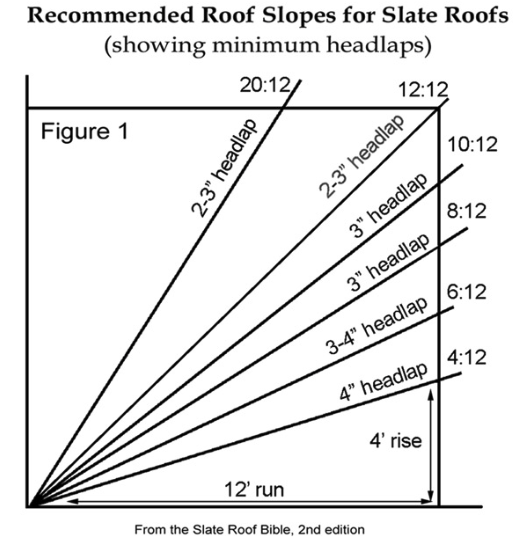
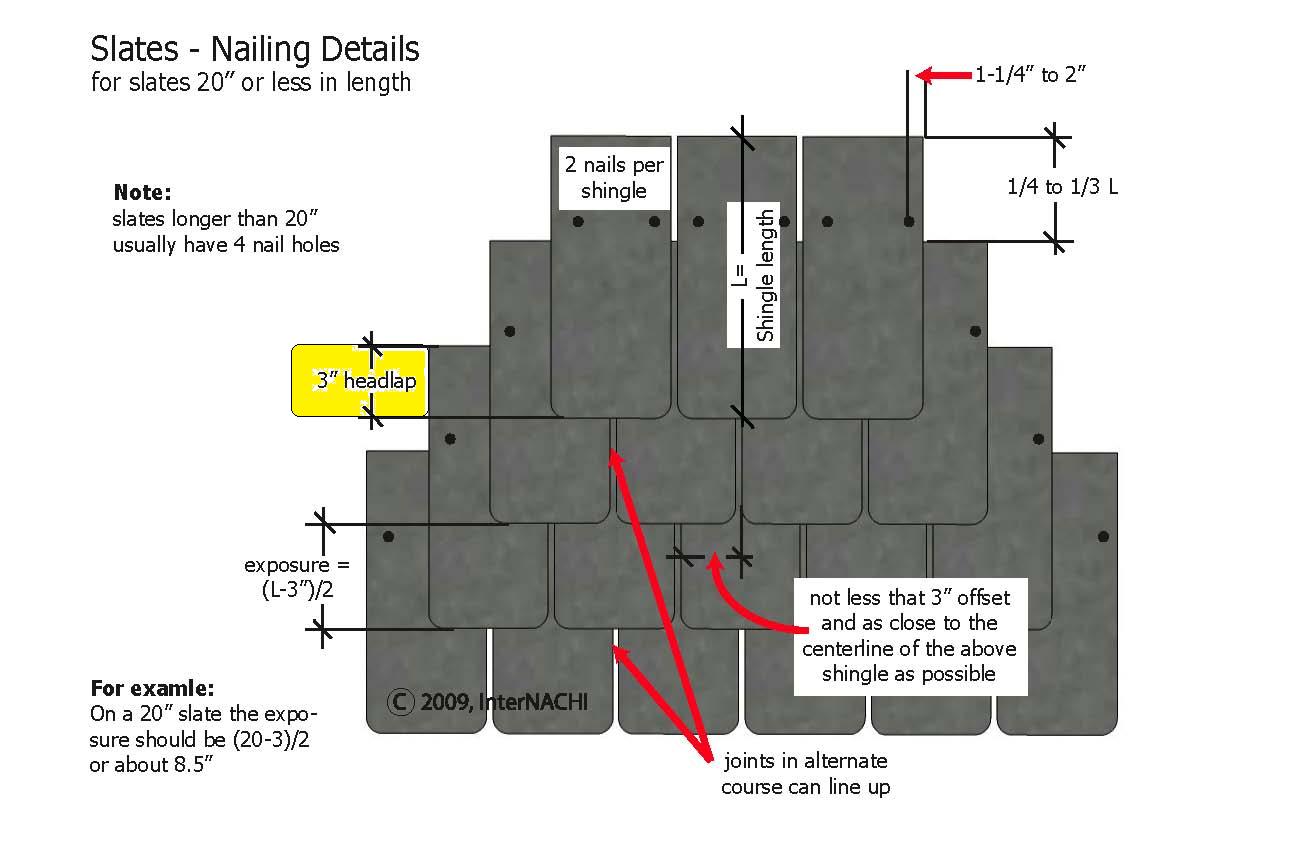 Headlap in slate roofs is the amount by which slates in alternate (not adjacent) courses overlap.
Headlap in slate roofs is the amount by which slates in alternate (not adjacent) courses overlap.

